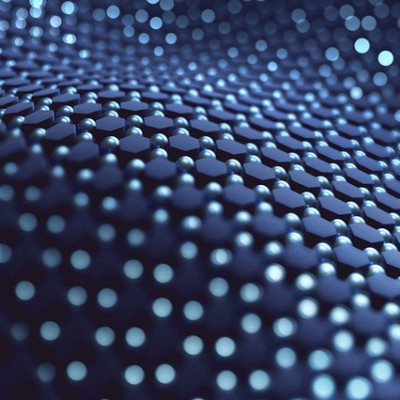
2022-11-09
Visited : 1665
Researchers from Sharif University of Technology and Tehran University have developed a theoretical and experimental solution to a decades-old problem concerning heat and electricity transmission in composite materials, which promises a new generation of lightweight advanced materials with high electrical and thermal conductivity. The results of this study have been published in the journal Applied Physics Reviews, where it has been highlighted as a featured article by the editors of the journal owing to its significance.
Improving the qualities of a material by combining it with small quantities of one or more additional elements to create a composite material is as ancient as humanity. Mud-straw plaster, in which the mechanical strength of clay is increased by adding straw to the soil, and stainless steel, in which the physical and chemical properties of iron are enhanced by adding substances such as carbon, are two examples.
Typically, the degree of improvement in the characteristics of a composite material is exactly proportional to the amount of the additive, but the composite material's electrical conductivity exhibits a highly intriguing and unusual characteristic known as percolation. If amounts of an electrically conductive material (such as metal particles) are added to an inherently electrically insulating material (such as most polymers and plastics), the composite material remains non-conductive up to a certain threshold of the conductive material (electrical percolation threshold). By raising the loading amount of the conductive material and above the percolation threshold, however, the composite material becomes abruptly conductive.
To describe this phenomenon, there is a simple yet powerful and universal physical model known as the percolation model, which is valid from subatomic scales to cosmic dimensions and is capable of describing numerous other natural phenomena, such as the spread of diseases or rumors in society, forest fires, or the spread of malignant tumors within the body.
Despite the striking similarities between the physics of electricity conduction and heat conduction in materials, the presence or non-existence of a thermal percolation threshold in composite materials has been the subject of heated controversy among scientists for decades. Heat conduction in a material that is intrinsically a poor heat conductor is never enhanced by the addition of a substance that is a heat conductor, according to the majority of experimental investigations undertaken in this subject.
The few studies that have demonstrated an improvement in heat conduction in composite materials cannot be characterized by a simple model of percolation, and this increase in thermal conductivity is obtained at extremely high and ineffective loading levels (more than 50% of the weight of the additive). In addition, several theoretical investigations have shown that heat transfer in composite materials is almost impossible.
A group of Iranian researchers, led by Mr. Navid Sarikhani (Faculty of Mechanical Engineering, Sharif University of Technology) and Mrs. Zohreh Arabshahi (Faculty of Physics, Sharif University of Technology) under the supervision of Dr. Alireza Moshfegh (Faculty of Physics, Sharif University of Technology) and Dr. Abbas Ali Saberi (Faculty of Physics, University of Tehran), have succeeded in designing, formulating and producing advanced composite materials which have demonstrated electrical and thermal percolation thresholds simultaneously and with very low loadings of the conductive material (less than 2% of the weight).
To produce these composite materials, nanostructure addons (multi-walled carbon nanotubes, graphene, and boron nitride) have been incorporated into a polymer substrate (Polypropylene). This research team has also created, within the context of a generalized percolation model, a unified universal theory to explain their experimental findings. This new theory places heat diffusion in composite materials in the global class of diffusion problems with two critical faces, making it comparable to electrical conduction in electrolytes or a network of electrical resistances and capacitors.
The broader objective of this research is to develop a new generation of light composite materials with adjustable and high electrical and thermal conductivity that can be used in a variety of applications in the aviation and automotive industries, as well as for protective coatings against electromagnetic wave absorption, packaging of electronic components, thermal pastes, and thermoelectric materials.
The results of this research have been published in Volume 9, Number 4 (December 2022) of the scientific journal Applied Physics Reviews published by the American Institute of Physics (AIP) with an impact factor of 19.53 (five-year impact factor of 20.56).
Read the original article on INIC.